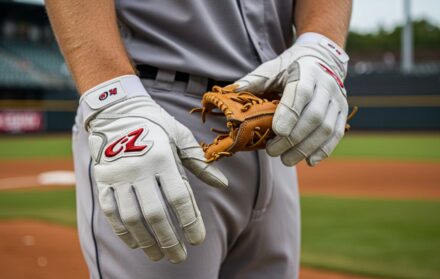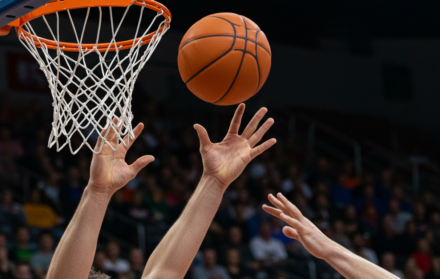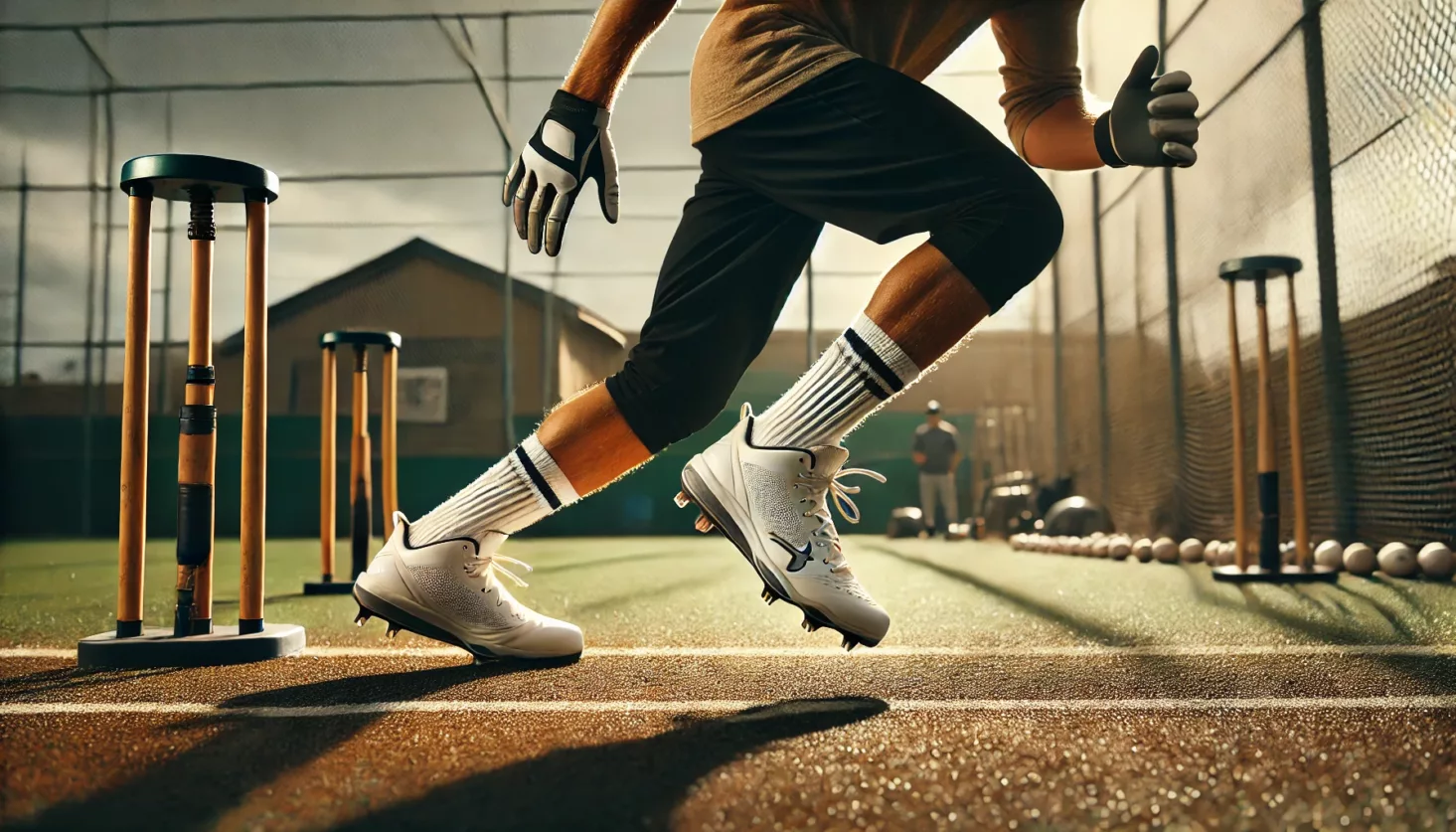
Baseball Footwork Fundamentals: Mastering Stance and Balance
Baseball is often celebrated for its dramatic home runs and electrifying defensive plays, but in many ways, success in every aspect of the game starts with having a solid base. Emphasizing baseball footwork fundamentals—the stance and balance that position your lower body correctly—can yield transformative changes for hitters, fielders, and pitchers alike.
From the moment you step into the batter’s box or take your spot in the infield, the way you distribute your weight and align your feet can decide whether you connect solidly with the ball or fumble an easy grounder. Footwork is not just another technical element; it’s the engine that drives power, consistency, and efficiency on the diamond. By mastering stance and balance at a granular level, you arm yourself with a foundation on which all other baseball skills can be built.
The Silent Advantage: Why Footwork Shapes Every Play

In baseball, even minor mechanical issues—like standing too close to the plate or shifting your weight unevenly—can snowball into major inconsistencies. This is particularly evident in batting, where the slightest misalignment can throw off your swing path or timing. But footwork extends well beyond the batter’s box. Whether you’re turning a double play as a middle infielder or positioning yourself under a high fly ball in the outfield, footwork defines the angles and momentum you can generate. A shortstop who understands how to swiftly move his feet can scoop up grounders on the run, pivot for a throw, and still find time to check the runner—gaining precious extra seconds. A first baseman who lacks consistent footwork might cost the team vital outs by failing to pivot or stretch effectively.
Even for pitchers, foot placement can dictate repeatable mechanics. Releasing the ball with the same stride length and foot angle fosters better location and consistency of pitch movement. Fielders, for their part, develop sure hands not just by practice alone, but also by placing their feet in the right position to handle the ball comfortably. Over time, players who refine stance and balance reach the point where quick, decisive foot movements feel second nature. That’s where the concept of muscle memory takes over, allowing them to focus on the more unpredictable elements of the game—like reading a tricky bounce or guessing the pitcher’s next pitch—while their lower body performance hums reliably in the background.
Building the Foundation: The Anatomy of a Proper Stance
Before analyzing footwork in motion—like striding into a pitch or charging a slow roller—it helps to dissect the foundation: your stance. In baseball, stance pertains to how you position your feet, distribute your weight, and align your body before initiating a swing, pitch, or fielding motion. Each position on the diamond has slightly different stance requirements, yet the underlying principles remain consistent: stability, readiness, and adaptability.
- Width and Alignment For batters, a comfortable stance generally places the feet at or just outside shoulder width, providing a sturdy base. Too narrow a stance can compromise balance; too wide might hamper stride length and rotational torque. Moreover, your toes should typically aim parallel to home plate—pointing outward excessively can limit rotational power, while pointing them in unnaturally might constrict your hips.
- Weight Distribution Another dimension of stance is weight distribution between the front and back foot. Many hitters prefer a slightly back-foot-heavy stance to maximize weight transfer forward during the swing. Fielders, especially infielders, keep a more even split so they can dart left, right, forward, or backward without telegraphing movement. The key is finding a sweet spot that feels “loaded” yet comfortable, allowing for explosive steps.
- Posture and Head Level Even if your feet are perfectly placed, poor posture can sabotage balance. Maintain a slight bend in the knees, keep the torso stable, and try to keep your head level. Dropping or raising your head mid-movement can make your eyes shift, impairing depth perception and pitch tracking. For pitchers, a solid posture at the set position ensures smooth weight transfer during the leg lift and stride.
- Relaxed Tension Though it sounds contradictory, it’s essential to balance relaxation and readiness. Your stance should be strong enough to hold ground against an unexpected shift—like a quick pickoff attempt if you’re a baserunner—yet relaxed enough to make fluid movements. Excess tension in your lower body can cause you to freeze or be slow off the mark.
Overall, a correct stance is both the launchpad and the anchor for every baseball skill. When it’s time to swing, you uncoil from your stance. When it’s time to run, your first step is guided by how your feet are set. Start from the ground up, ensuring your stance is both comfortable and functional, and you’ll discover that every subsequent action flows more smoothly.
Weight Transfer: The Catalyst for Power and Precision

Once a stance is set, the next link in the footwork chain is weight transfer—the dynamic motion of shifting your body weight from one foot to the other, allowing you to create momentum. In hitting, weight transfer is what lends power to a swing.
You load onto your back foot, coil your hips, then shift forward as you rotate, driving energy into the bat. An incomplete or mistimed weight transfer often results in weak contact or pop-ups. Similarly, pitchers generate velocity by smoothly transferring weight from the back leg to the front leg, releasing the ball at maximum momentum.
Even fielders rely on weight transfer to gather and throw quickly: after scooping a grounder, a shortstop might step through the ball, letting the forward momentum power the throw to first base.
Hitting Perspective:
When you watch elite hitters, notice how fluid their step is when they stride forward. This stride represents a deliberate shift from back foot to front foot. However, you don’t want to “lunge.” The shift should be measured—transferring energy rather than diving forward. Achieving this balance typically involves a slight inward knee turn on the back leg as you load, followed by a controlled forward stride. During contact, your weight predominantly rests on the front foot, but with enough residual balance on the back foot to maintain posture. If you find yourself stumbling, you’re likely over-shifting your weight.
Pitching Perspective:
For pitchers, weight transfer occurs in two main phases: the leg lift and the drive toward home plate. During the leg lift, weight sits over the back foot, which grips the rubber. As the pitcher strides, they push off from that back foot, transferring energy into the front leg plant. The front foot alignment sets the direction of the pitch, while the trunk rotation and arm whip deliver velocity and spin. Faulty weight transfer—like leaking open too early—can cause velocity drops and erratic control. Repeatedly practicing an efficient push-off can add both speed and consistent location to your arsenal.
Fielding Perspective:
A crucial fielding example is turning a double play. After gloving the ball, a second baseman must shift weight from the catch foot to the foot stepping toward the bag, then continue the transfer toward the throw. A misalignment or a lazy shift can cost a fraction of a second, losing the out. Crisp footwork is essentially weight transfer manifested in small, precise movements under time pressure. The best fielders appear almost choreographed, stepping gracefully through each stage of the play.
In essence, weight transfer is the heartbeat of movement in baseball. Mastering it requires understanding not just the “when” but also the “how,” ensuring your momentum complements, rather than disrupts, your technique.
Dynamic Balance: Staying Centered Amid Rapid Shifts
Balance is not the static posture of a yoga pose; in baseball, it’s dynamic—constantly recalibrated as you shift weight, stride, and rotate. One of the core challenges of baseball footwork fundamentals is maintaining a stable center of gravity even when your feet are in flux. Consider a batter who sees an inside pitch at the last second. They might need to open up the hips quickly, step slightly inward, and still keep enough balance to drive the ball. That’s dynamic balance in action.
For pitchers, dynamic balance is equally critical. The step-off from the rubber, the forward stride, and the rotational finish all rely on micro-adjustments that keep the body stable while generating force. If a pitcher collapses onto the front leg or fails to keep the head aligned, even a well-located pitch can lose velocity or movement.
Training for Dynamic Balance
- Single-Leg Drills Performing simple single-leg stands or lunges fosters the stabilizer muscles in the ankles, knees, and hips. Once comfortable, you can escalate to single-leg hops or a mock throwing motion while standing on one foot.
- Agility Ladders Quick lateral movements in agility ladder drills mimic the foot speed needed in fielding. Practice stepping in and out of the ladder rungs with precise foot placement, ensuring your upper body remains balanced over your feet. This hones dynamic balance while building coordination.
- Core Strength Work A robust core—your abdominals, obliques, and lower back—anchors your upper and lower halves. Planks, rotational twists, and stability-ball exercises all contribute to dynamic balance. A strong core ensures that when your legs move, your torso remains well-aligned, allowing you to maintain form.
- BOSU or Balance Boards Standing or performing controlled movements on unstable surfaces like BOSU balls compels your body to auto-correct, improving your reflexive stability. Over time, your ankles and core develop a heightened sense of equilibrium, beneficial during quick shifts on the field.
By integrating such drills, players develop an inner sense of equilibrium that makes adjustments feel less forced and more intuitive. When actual gameplay demands sudden sprints or leaps, you’ll find your body recovers posture more quickly, reducing errors and increasing fluidity.
The Batter’s Footwork Blueprint: Launching From a Stable Base
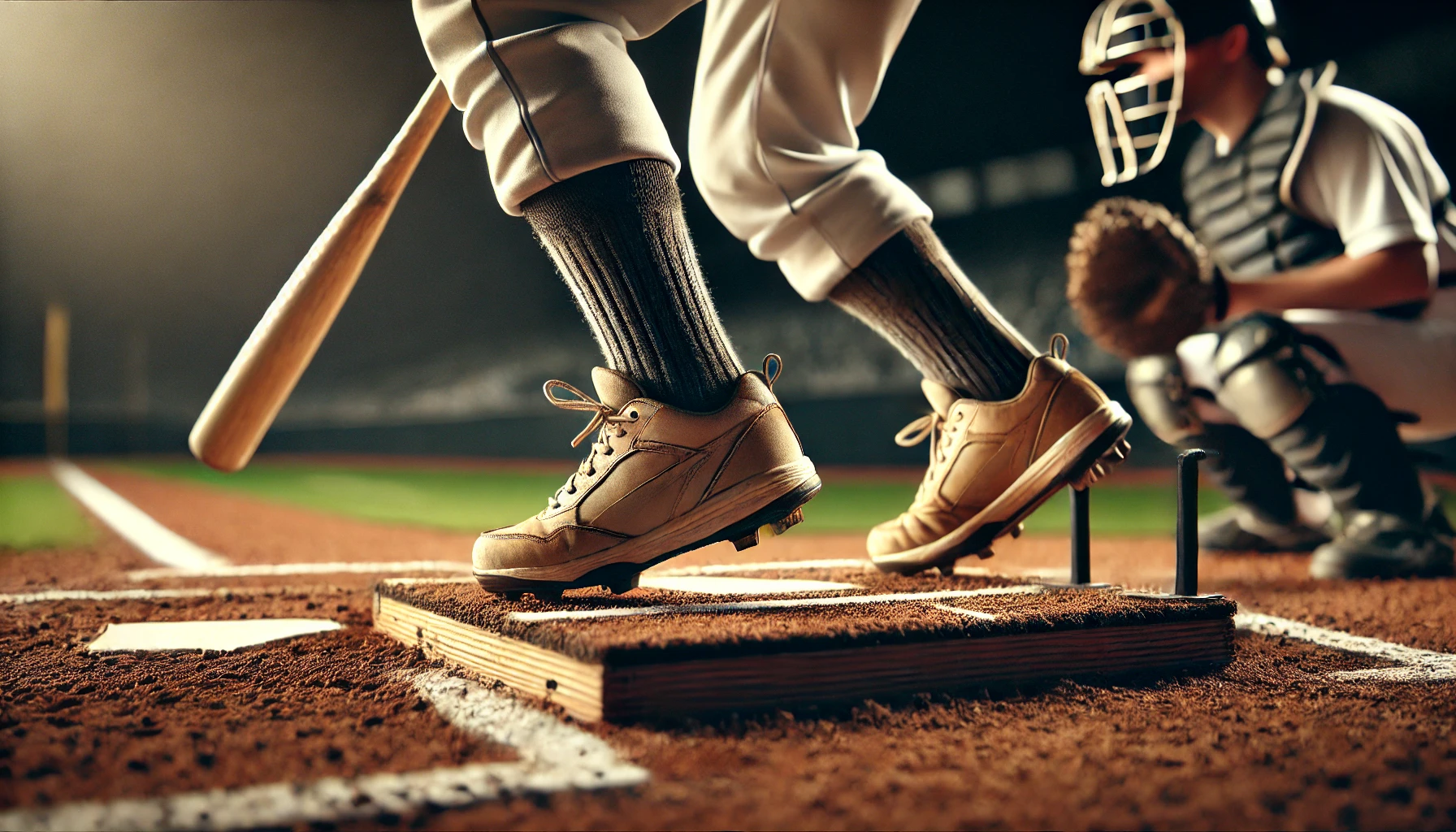
The art of hitting involves much more than just powerful arms; your feet and legs generate the initial thrust that channels energy into your swing. From the moment you plant in the batter’s box, you’re setting the stage for how the entire batting motion unfolds. Analyzing major league hitters reveals that while styles vary—open stance, closed stance, wide stance—the fundamental principle remains consistent: stable foundation, smooth load, precise stride, and balanced finish.
Key Elements of Batter’s Footwork
- Load Phase: Often referred to as the “stride load,” this is where you gather weight onto your back foot. Some hitters incorporate a high leg kick, while others keep it minimal. Regardless, the essential factor is transferring weight backward without collapsing the back knee or over-rotating the hips. This coiled position harnesses potential energy.
- Stride and Timing: As the pitcher releases the ball, you stride forward, shifting from the back foot to the front foot. The length of stride varies by preference—some short and compact, others longer for extended coverage. Ideally, your stride aligns with the pitch’s line; stepping too far closed or open can hamper your swing path. This is also where timing meets footwork: stride too early, and you’ll lose power or commit to a pitch prematurely; stride too late, and you risk being jammed.
- Front Foot Plant: The moment your front foot touches the ground, the weight transfer culminates. This critical instant sets the stage for hip rotation and upper-body uncoiling. A firm, balanced plant fosters an explosive turn, while a wobbly plant leads to off-balance swings.
- Follow-Through and Recovery: After contact, your body’s momentum continues forward. Maintaining a steady base ensures you can adjust if you misjudge pitch location. Some hitters use a wide stance at contact, allowing them to pivot or react if the ball breaks unexpectedly.
In practice, try slow-motion swings focusing solely on your step and front foot plant, ignoring the upper-body mechanics. Then, integrate the arms. This layering approach helps you internalize footwork, so it becomes second nature by the time the pitch arrives. Over many reps, you’ll develop a consistent stride that aligns with your strike zone coverage and personal timing preferences.
Footwork in the Field: Angles, Quick Steps, and Seamless Transitions
While batting footwork is often in the spotlight, fielding footwork can drastically enhance or hinder a team’s defensive prowess. Infielders must react instantly to batted balls, often taking just two or three steps before gloving the ball and making a lightning throw.
Outfielders, too, rely on swift footwork to track fly balls, line up behind the ball, and prepare a strong throw. Even catchers juggle footwork mechanics when shifting to block a wild pitch or fire a throw to second base.
Cornerstones of Defensive Footwork
- Ready Position Infielders typically adopt a slightly wider stance than batters, knees bent and weight on the balls of their feet. This stance is akin to a defensive stance in basketball—ready to move in any direction. Outfielders, while not as low, still maintain a stance that facilitates immediate acceleration.
- First Step Quickness The initial step or pivot sets the trajectory for how you approach the ball. Drills like drop-step exercises for outfielders or reaction drills for infielders train this muscle memory. Quick lateral shuffles can help corner infielders handle tricky grounders hit to their left or right.
- Approach and Fielding Triangle Infielders are taught the “fielding triangle,” where your feet create a wide base, and you bend from the hips, forming a triangle with the ground and your glove. The better your foot placement, the more cleanly the ball enters your glove. If your feet are misaligned, you’ll fumble or need extra time to correct posture.
- Throwing Transition After fielding, your footwork transitions toward the target. In a short time, you shift weight from the receiving foot to the step foot that points toward first base (for example). Smooth transitions accelerate the throw release, crucial in tight double plays or trying to get a speedy runner.
- Outfield Catch and Throw Outfielders typically approach fly balls with an “around-the-ball” technique, circling slightly so they catch the ball while moving forward, aligning themselves for a throw home or to a cutoff man. Footwork here ensures momentum flows into the throw rather than stopping dead upon the catch.
Developing impeccable fielding footwork is about repetition under realistic conditions. Reacting to differently angled hits, practicing throws on the move, and working foot drills at varied speeds embed the agility needed when it counts. Over time, you’ll gain the intangible “quick feet” that managers rave about—able to cleanly handle both routine and challenging plays with minimal wasted motion.
Drills and Exercises to Reinforce Baseball Footwork Fundamentals
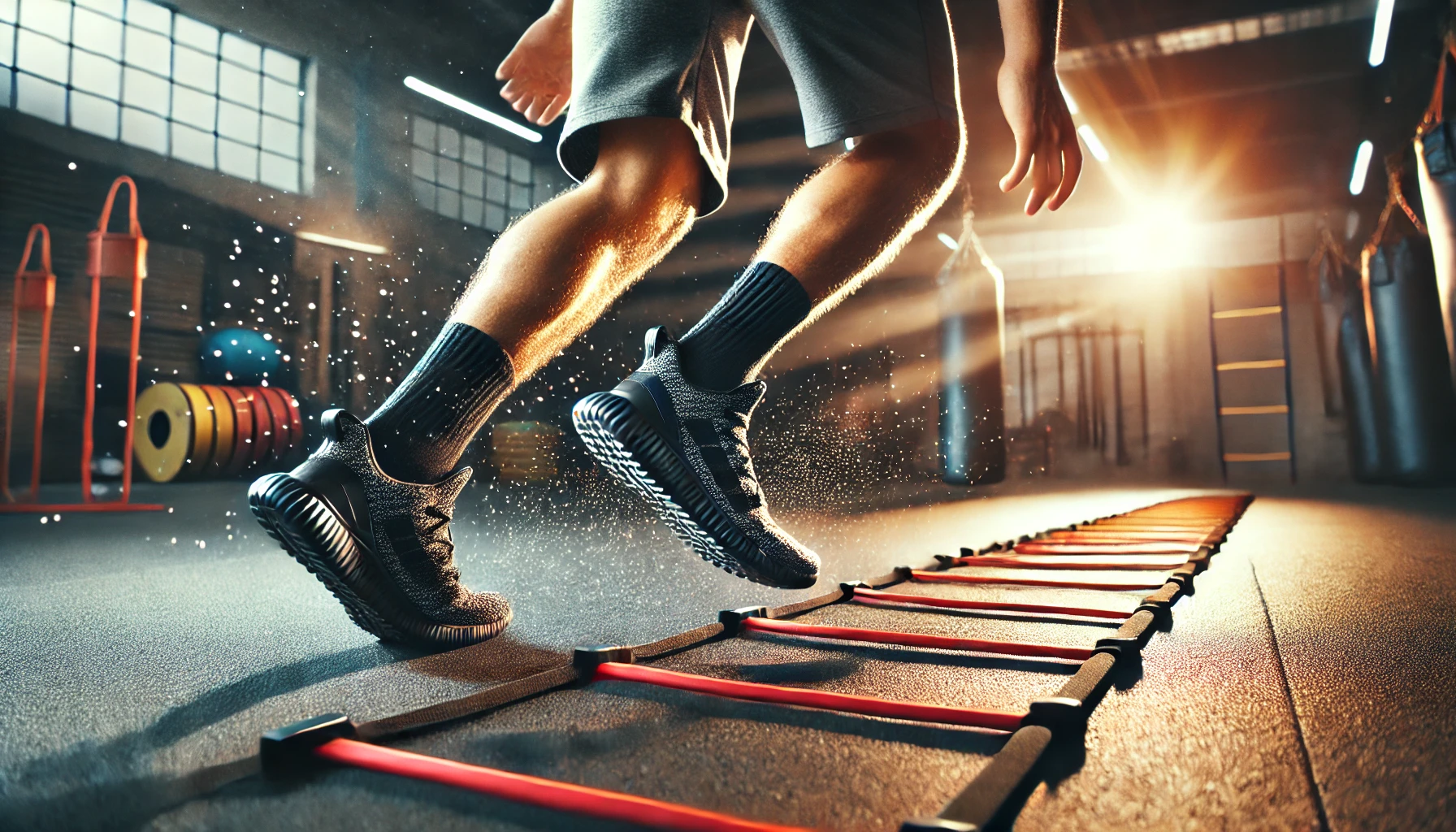
Even the best conceptual knowledge remains hollow without structured training. Below are some targeted exercises that unify the principles of stance, weight transfer, and dynamic balance. While we aim to “lessen the list types,” enumerating them can provide clarity on each drill’s unique focus.
Shadow Footwork Sessions
Practice your batting stance and stride in a mirror or an open space. Focus on transferring weight from the back foot to the front foot with a smooth, continuous motion. For infielders, simulate fielding stances and approach angles without a ball, concentrating on how your feet pivot and plant.
Batting Tee with Foot Markers
Place small cones or markers where you want your front foot to land relative to the tee. This fosters consistency in stride direction, preventing you from stepping too open or closed. Swing at a moderate pace, focusing on the crispness of your weight shift.
Ladder Agility for Fielders
Set up an agility ladder on the turf. Perform quick lateral steps, high knees, or diagonal movements, imagining each rung as a mini step. Keep your upper body steady, eyes forward. This conditions your feet for the rapid directional changes demanded by ground balls or line drives.
Catch-and-Throw Footwork Circuits
Set up a simple circuit: begin at your fielding ready position, move to field a slow-rolled ball, then pivot to throw at a target. Emphasize short, purposeful steps rather than long lunges. You can escalate difficulty by speeding up the roll or adding lateral movement.
Weighted Transfer Drills
For hitters looking to refine their load and stride, using a light resistance band around the waist can help. Anchor one end behind you. As you stride, the band’s pull forces you to engage your core and legs more aggressively, reinforcing stable weight transfer.
BOSU Balances with Catch
Stand on a BOSU ball in your fielding stance while a partner tosses you a baseball. Attempt to catch it without stepping off. This merges dynamic balance with upper-body coordination, mirroring the unpredictability of real gameplay.
Release Point Sprints for Pitchers
Pitchers can do short sprints from the pitching rubber to first base or toward home plate, focusing on keeping their posture aligned. This fosters the habit of generating forward momentum without compromising body control.
These drills can be mixed and matched to build a well-rounded footwork routine. Frequency matters: even 15 minutes daily of targeted footwork practice can yield more stable and agile mechanics, enabling all other baseball skills to flourish.
Common Pitfalls and How to Fix Them
Despite best intentions, players often fall into footwork traps that undermine performance. Recognizing these mistakes is half the battle; correcting them cements progress.
- Overstriding at the Plate Some batters try to generate power by taking an excessively long stride. This can lock the hips and cause an early weight shift, leading to weak contact. The remedy is focusing on a shorter, controlled stride that still allows the hips to rotate explosively.
- Leaning Instead of Stepping Fielders, especially infielders, sometimes lean toward a grounder rather than moving their feet. This leads to reaching for the ball or mishandling short-hops. The fix: commit to “feet first,” requiring quick shuffles or cross-steps so the glove meets the ball in a balanced posture.
- Pivoting Too Late Pitchers who pivot late from the rubber often wind up opening their hips prematurely, robbing power and accuracy. Regular bullpen sessions with markers near the rubber can prompt earlier pivot timing, aligning the stride foot more consistently.
- Stationary Outfield Catch Outfielders who simply park under a fly ball without adjusting their approach lose momentum for the throw. Make it a habit to “circle around,” ensuring you catch while moving forward. This footwork allows a fluid transition into your throwing motion.
- Lack of Upper-Body Core Engagement Though not strictly “footwork,” ignoring the role of torso stability means footwork improvements won’t translate fully. Players must integrate balanced stances with core tension. If your upper body drifts too far, your feet can’t compensate effectively.
- Eyes Wander from the Ball Whether batting or fielding, letting your eyes drift from the ball to check your feet is a cardinal sin. Instead, your footwork must become subconscious so your gaze remains locked on the ball’s path.
The overarching antidote to these pitfalls is self-awareness. If possible, record your practices and watch for these patterns. Seek immediate corrections from coaches or teammates when they observe your footwork deviating. The earlier you catch and fix these habits, the quicker you can progress toward fluid, confident movement.
Integrating Footwork Into Team Strategy
Baseball is a team sport where individual excellence often merges to form cohesive strategies. Well-drilled footwork can enhance situational plays, from bunt defenses to first-and-third pickoff maneuvers. A coordinated infield, for instance, arranges footwork patterns so that each fielder knows who covers second base or how they’ll pivot on a relay throw. When footwork is sloppy, confusion reigns, and the extra fraction of a second might cost an out—or worse, lead to runs.
Teams can integrate footwork fundamentals into everyday drills. For instance, instead of a basic game of catch, incorporate lateral shuffles or short sprints before throwing. Or run fielding practice where infielders rotate through short-hop pickups, focusing on stepping into the throw. Over time, shared footwork principles unify defensive movements. Similarly, batting practice can mix batting stance focus with situational hitting, ensuring that each player’s stance and stride align with the intended strategy—like hitting behind a runner or avoiding a grounder to the left side.
The intangible benefit is confidence. When a roster collectively invests in footwork, each player anticipates sharper, more reliable movements from teammates. This leads to bolder baserunning, more aggressive fielding strategies, and a sense of synergy. In the long run, footwork isn’t just about personal mechanics; it shapes the rhythm and efficacy of the entire squad.
Conclusion: Unlocking Consistency Through Baseball Footwork Fundamentals

A more consistent, powerful, and dynamic performance on the diamond often comes down to the nuts and bolts of baseball footwork fundamentals. By refining stance, balance, and weight transfer, you lay the groundwork for explosive hitting, seamless fielding transitions, and repeatable pitching mechanics. Footwork is neither an optional add-on nor a quick fix; it’s an integrated system that touches every facet of baseball. Striking a stable stance is like grounding a building’s foundation; the entire structure benefits from that solidity. Masterful weight transfer channels this stability into power and agility, ensuring that each stride or pivot feels intentional rather than forced.
In the daily grind of practices, warm-ups, and game-day routines, footwork can sometimes fade into the background. Yet those who prioritize it—drilling dynamic balance, calibrating stance widths, and practicing smooth transitions—quickly notice the ripple effect: sharper swings, quicker glove-to-throw times, and more adept pitching repetitions. And once footwork becomes second nature, you’re free to concentrate on reading the pitch, anticipating the runner, or deciding your next strategic move. A player grounded in impeccable footwork transforms from an erratic performer into a steadier, more reliable force that coaches love to rely on.
Baseball is demanding, and marginal improvements can define a season or a career. By continually revisiting and polishing footwork fundamentals, you elevate your baseline abilities, forging a resilience that holds up under pressure. From youth leagues to the professional ranks, the best baseball stories often begin at the feet. When you step into the box, or the infield, or onto the mound, it’s your footwork that anchors your ambitions. So commit to the craft, stay open to incremental growth, and let a balanced stance and fluid weight transfer set the stage for all the magic that follows.
